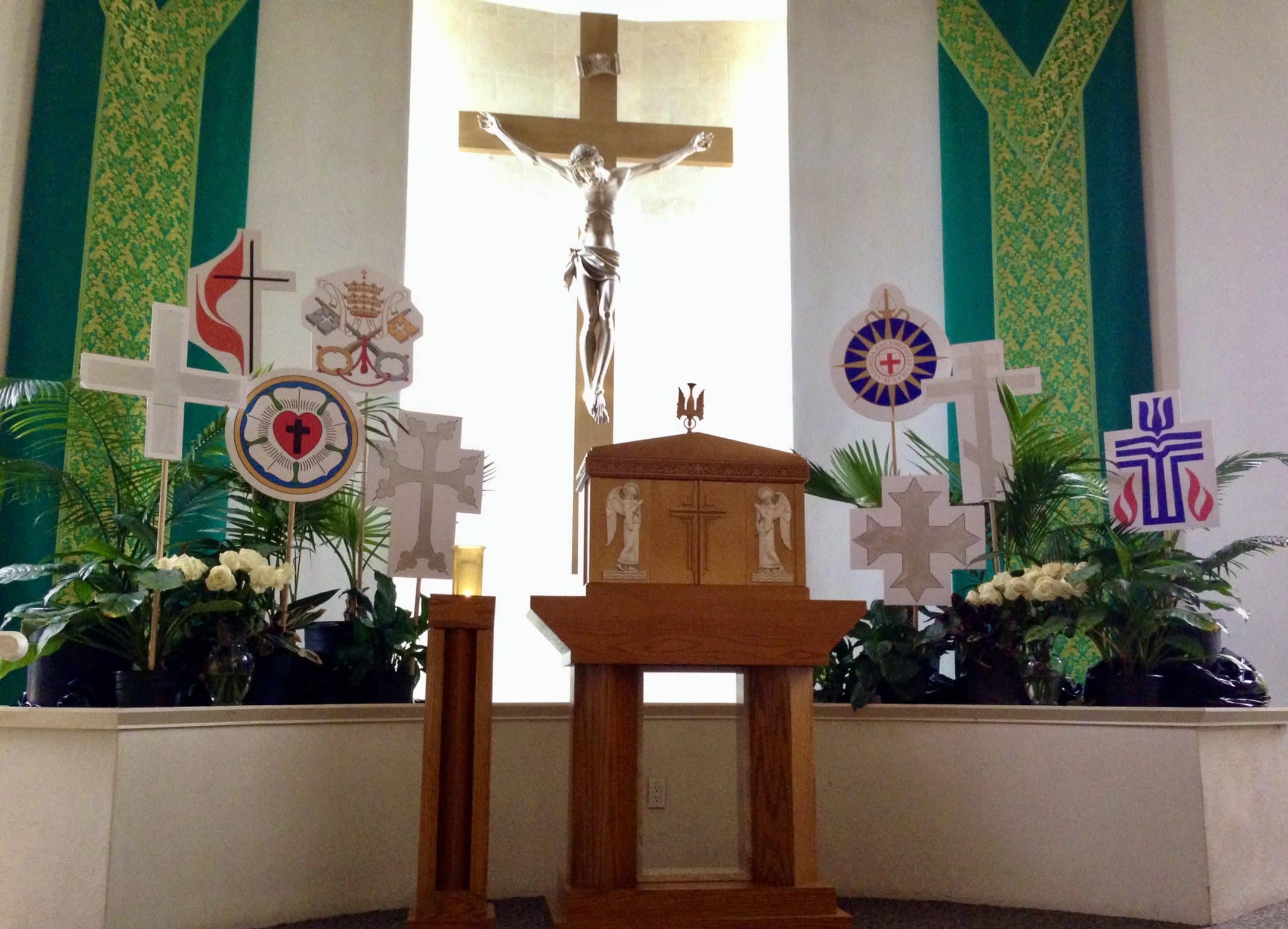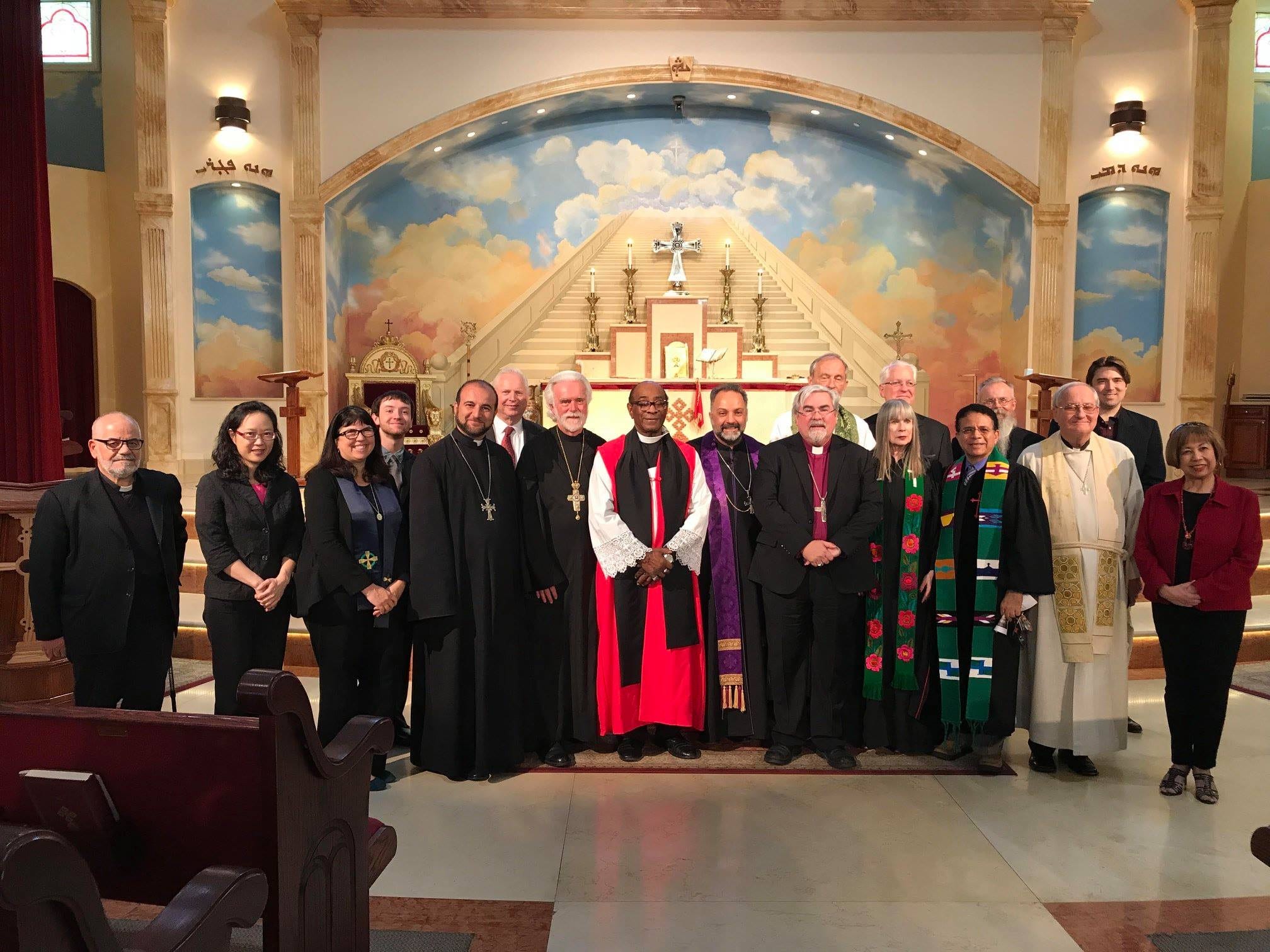Love gives rise to the desire for unity, even in those who have never been aware of the need for it. Love builds communion between individuals and between Communities. If we love one another, we strive to deepen our communion and make it perfect.
This love finds its most complete expression in common prayer. When brothers and sisters who are not in perfect communion with one another come together to pray, the Second Vatican Council defines their prayer as the soul of the whole ecumenical movement (21).
If Christians, despite their divisions, can grow ever more united in common prayer around Christ, they will grow in the awareness of how little divides them in comparison to what unites them. (22)
– Ut Unum Sint – 1995 Encyclical by Saint Pope John Paul II
The Week of Prayer for Christian Unity has a history of over 100 years, in which Christians around the world have taken part in an octave of prayer for visible Christian unity. By annually observing the Week of Prayer for Christian Unity, Christians move toward the fulfillment of Jesus’ prayer at the Last Supper “that they all may be one.” (John 17:21)
In preparation for the Week of Prayer for Christian Unity, ecumenical partners in a particular region of the world are asked to prepare a basic text on a biblical theme. Then, an international group organized through the World Council of Churches (WCC) and The Pontifical Council for Promoting Christian Unity edits the text, which is then jointly published by the Pontifical Council for Promoting Christian Unity and the WCC, through their Commission on Faith and Order.
Further promotional and preparatory materials for the Week of Prayer for Christian Unity can be ordered through the Graymoor Ecumenical and Interreligious Institute, including:
- Suggestions for observing the Week of Prayer for Christian Unity
- Thematic poster art, music, and prayer cards (English/Spanish)
- Scripture readings, commentaries and questions for reflection
- Ecumenical prayer service model
- Historical and contextual information
Here in Los Angeles, the Southern California Christian Forum organizes an annual Ecumenical Prayer Service for Christian Unity during the Week of Prayer for Christian Unity. Each year, a different denomination hosts the service. In years past, host churches/organizations have included the Southwest California Synod of the Evangelical Lutheran Church in Glendale, St. Mary’s Assyrian Church of the East in Tarzana, the Hollywood United Methodist Chuch, Good Shepherd Roman Catholic Church in Beverly Hills and Saint Andrew Russian Greek Catholic Church in El Segundo.
If interested in attending or hosting the next Prayer Service for Christian Unity for the Southern California Christian Forum, or if you have questions about organizing your own service, please contact Rt. Rev. Alexei Smith, Ecumenical and Interreligious Officer of the Archdiocese and President of the Southern California Christian Forum at FrARSmith@la-archdiocese.org.
Joint prayer and the pursuit of unity is not only important during the Week of Prayer for Christian Unity, however. Thus, the Southern California Christian Forum provides opportunities throughout the year for broadening and deepening encounters among the followers of Christ, such as monthly ecumenical bible studies. Please see the Ecumenical Resources page for more information. To be placed on the Forum’s e-mail list for upcoming events, please contact contact@socalforum.net.

